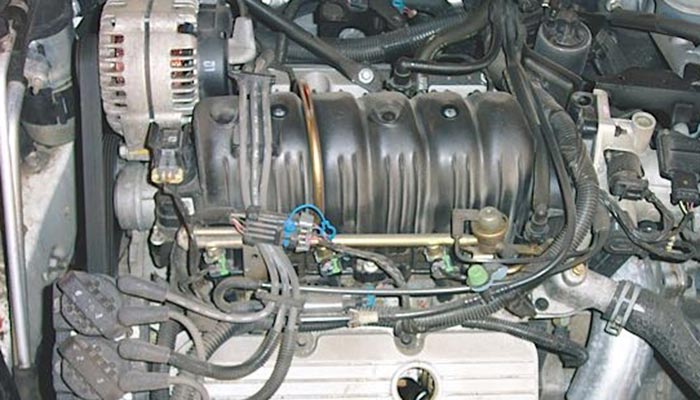Most late-model engines come factory-equipped with plastic intake manifolds. Plastic saves weight and cost, and conducts heat much more slowly than aluminum or cast iron. This helps lower the temperature of the incoming air for a denser, more powerful air/fuel mixture.
However, plastic intake manifolds are susceptible to cracking because they are plastic. The nylon-filled polymers that are used to make plastic intake manifolds lack the strength of a cast aluminum or iron intake manifold. What’s more, plastic manifolds can easily crack by mishandling, over-tightening fasteners, excessive bending, flexing, overheating, vibration, or an engine backfire. One kaboom that blows back into the intake manifold can crack or even split open a plastic runner or plenum.
Hairline cracks in plastic manifolds can be difficult to see because they may be between manifold runners, along casting seams or where the manifold runners mate with the cylinder head. Many manifolds are two-piece assemblies, so leaks can also occur where the upper half of the manifold mates to the bottom half.
A hairline crack in a plastic intake manifold usually won’t cause an engine failure, but it can cause idle, fuel mixture, drivability and emission problems.
Vacuum leaks (air leaks) in an intake manifold make it difficult for the engine management system to maintain the proper air/fuel ratio. With mass airflow (MAF) fuel injection systems, all airflow into the engine is measured by the MAF sensor (which is mounted ahead of the throttle body). If air sneaks in at another point downstream of the MAF sensor, it will lean out the air/fuel mixture. Depending on how bad the leak is, this may cause a lean misfire and a rough idle, a hesitation or stumble when the throttle opens, and increased emissions. Small leaks have the greatest effect at idle and less effect or no effect at cruise and wide-open throttle when there is increased airflow through the manifold. But a large leak in an individual intake runner can make a cylinder run dangerously lean, increasing the risk of detonation and burning a piston or a valve.
Pressure testing is probably the best way to check a plastic intake manifold for leaks when the manifold is off the engine. Penetrating dye can also work. An ultraviolet dye will make cracks easier to see on a black plastic manifold than a colored dye.
If the manifold is on an engine, and the engine has an idle misfire, rough idle, runs lean or lacks normal power, the manifold may be sucking air somewhere. Check the gasket or sealer between the upper and lower halves of the manifold and the intake manifold gaskets where the manifold mates with the head. Also, check all vacuum connections and hoses that could be allowing unmetered air into the engine. If no obvious leaks are found, the manifold may be cracked.
There are a couple of ways to check a plastic manifold on an engine for cracks. One is to start the engine and let it idle while you feed propane gas through a short piece of hose along all mating surfaces, seams and flanges. If the idle suddenly smooths out, it means a crack is sucking the propane gas into the manifold. You’ve found the leak and now you need to fix it.
Another technique is one that professional technicians often use to find manifold leaks. With the engine off, a low-pressure mineral vapor is fed into the intake manifold using a “smoke machine.” Vapor mist leaking anywhere out of the manifold indicates a leak. Using UV dye with the smoke machine makes such leaks even easier to spot.
A cracked plastic intake manifold can be fixed a couple of ways. You can replace the manifold (or the section that is leaking), you can seal the leak with epoxy or RTV silicone sealer, or you can repair the leak by welding the plastic with a high-temperature heat gun and a compatible rod of plastic filler material. Body shops often use the latter technique to repair damaged plastic body parts.














